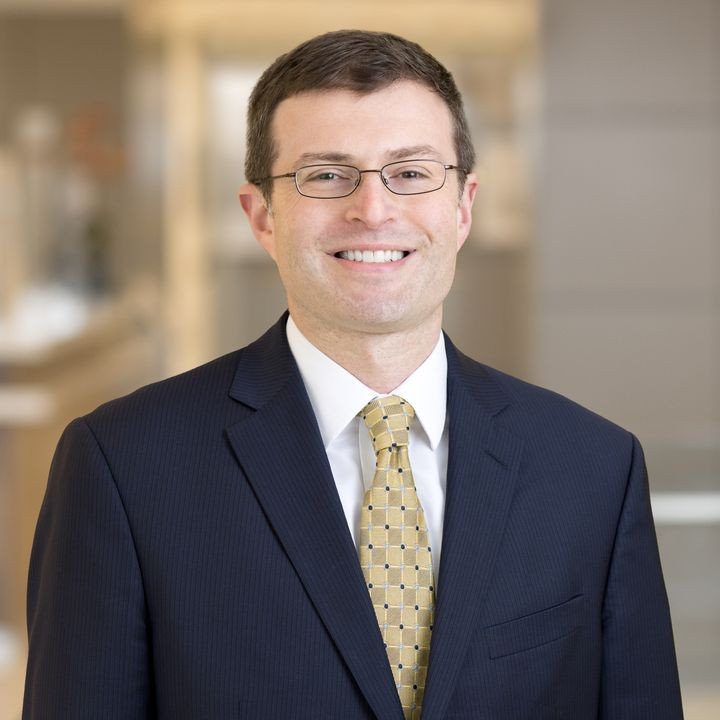Ninth Circuit’s Rose Decision Could be a Thorn in the Side of Relators (At Least for Now)
Client Alert | 6 min read | 08.29.18
In Universal Health Services, Inc. v. United States ex rel. Escobar, 136 S.Ct. 1989 (2016) (discussion by C&M attorneys here), the Supreme Court held that an implied false certification can be a basis for False Claims Act (FCA) liability, “at least where two conditions are satisfied:” (1) the claim makes specific representations about the goods or services provided and (2) the defendant’s failure to disclose noncompliance with material statutory, regulatory, or contractual requirements makes those representations misleading half-truths. (Emphasis added).
Since Escobar, lower courts have split on whether that two-part test was necessary—or merely sufficient—for establishing such FCA liability. Compare, e.g., U.S. v. Sanford-Brown, Ltd., 840 F.3d 445, 447 (7th Cir. 2016) (holding that an implied-certification claim must satisfy both conditions described in Escobar); with, e.g., U.S. ex rel. Badr v. Triple Canopy, Inc., 857 F.3d 174, 178 n.3 (4th Cir. 2017) (stating that it had “already answered” the question “left open” in Escobar by “holding that the Government pleads a false claim when it alleges a request for payment under a contract where the contractor withheld information about its noncompliance with material contractual requirements.”); U.S. ex rel. Panarello v. Kaplan Early Learning Co., No. 11-cv-00353, 2016 U.S. Dist. LEXIS 158193, at *13 (W.D.N.Y. Nov. 14, 2016) (“The fact that Escobar clarified ‘some’ of the circumstances creating implied false certification liability suggests that compliance with the conditions it discussed is not necessarily a prerequisite to implied false certification liability in every case.”).
Last week, in United States ex rel. Rose, et al. v. Stephens Institute, the Ninth Circuit joined the Seventh Circuit and held that Escobar’s two-part test is mandatory in all implied-certification cases under the FCA. That holding is welcome news to defendants at large. But the same cannot be said for the defendant in Rose, as the Court affirmed the district court’s denial of its motion for summary judgment, ruling that there was sufficient evidence for a jury to find that the two-part test had been met and that the noncompliance at issue was material to the government’s payment decision.
Background
In Rose, former admissions representatives alleged that the Stephens Institute (DBA Academy of Art University) violated the incentive-compensation ban in its program-participation agreement (PPA) with the Department of Education. According to the relators, the University did so by paying bonuses up to $30,000 to recruiters for enrolling higher numbers of students.
The district court denied the University’s summary-judgment motion on May 4, 2016. After the United States Supreme Court decided Escobar just one month later, the University sought reconsideration. The district court declined to reconsider its ruling, but it certified several questions concerning Escobar’s impact for interlocutory appeal.
Escobar’s Two-Part Test
In deciding whether the two conditions described in Escobar are mandatory for establishing a false claim based on implied certification, the Rose panel contended with both the Supreme Court’s decision and Ninth Circuit precedent. Prior to Escobar, the Ninth Circuit had recognized the implied-certification theory of FCA liability in Ebeid ex rel. United States v. Lungwitz, 616 F.3d 993 (9th Cir. 2010). Ebeid permitted implied-certification claims when (1) the defendant explicitly undertook to comply with a law, rule, or regulation that is implicated in submitting a claim for payment; (2) the defendant submitted the claim; and (3) the defendant did not comply with that law, rule, or regulation. Ebeid did not require that a claim for payment contain a “specific representation” that was misleading due to a failure to disclose a violation.
The Rose panel questioned whether Escobar itself necessarily overruled Ebeid. But in the panel’s view, two prior Ninth Circuit decisions applying Escobar had fatally undermined Ebeid. First, in United States ex rel. Kelly v. Serco, Inc., the panel applied only the two-part test from Escobar—and not the more relaxed Ebeid standard—in holding that the plaintiff’s implied-false-certification claim failed. 846 F.3d 325, 332 (9th Cir. 2017). Second, in United States ex rel. Campie v. Gilead Sciences, Inc., (discussion by C&M attorneys here), the panel held that Escobar’s two conditions must be satisfied to give rise to an implied-certification claim. 862 F.3d 890, 901-03 (9th Cir. 2017).
Ultimately, the Rose panel concluded that it was bound by Serco and Campie; hence, Escobar’s two-part test was mandatory. During oral argument in Rose, however, one of the judges suggested that the Ninth Circuit may need to resolve the issue en banc. The Rose opinion repeated that sentiment, noting that the panel was constrained “unless and until our court, en banc, interprets Escobar differently.”
The panel concluded that the evidence was sufficient to create an issue of material fact as to whether the University’s actions met the two Escobar requirements. In a loan School Certification form, the University had certified that the student applying for federal aid was an “eligible borrower” and was “accepted for enrollment in an eligible program.” Because the University did not disclose its violation of the incentive-compensation ban, the panel explained that the certification could be considered a “misleading half-truth.”
Materiality
The Rose panel then split 2-1 on whether the alleged false certification was material under Escobar. The majority concluded that a reasonable trier of fact could find that the violation was material because “the Department’s payment was conditioned on compliance with the incentive compensation ban, because of the Department’s past enforcement activities [against schools for violations of the incentive compensation ban], and because of the substantial size of the forbidden incentive payments.”
Judge N.R. Smith dissented. He emphasized that Escobar requires a “rigorous” and “demanding” inquiry into the government’s “likely or actual behavior” to determine whether the alleged misrepresentation was important to its decision to pay (or not). Because the majority relied on evidence of how the government generally enforces the incentive-compensation ban—and not how the government would respond to the specific incentive-compensation-ban violations alleged—Judge Smith opined that the only real evidence supporting materiality was the fact that payment was conditioned on compliance with the ban. According to Judge Smith, that was not dispositive under Escobar.
Looking Ahead
The relators in Rose had argued that the two conditions described in Escobar were merely one way to establish implied-certification liability. The Department of Justice supported the relators’ position as amicus curiae. In the DOJ’s view, “loose language” from other courts characterizing the two conditions “as necessary rather than merely sufficient” should not limit the implied-certification theory to cases where the alleged false claim makes “specific representations.”
In contrast to Rose, courts, including the Fourth Circuit in Triple Canopy, have endorsed that more expansive view of the implied-certification theory. Given the amount of leeway that Escobar leaves for interpreting the scope of implied-certification liability, the conflicting interpretations from lower courts, and the implicit invitation from the Rose panel, this issue may be an appealing candidate for en banc or even Supreme Court review.
For now, the Rose decision is good news for those facing implied-certification claims. By holding that the two conditions expressly mentioned in Escobar are necessary for establishing liability under a false-certification theory, the Rose decision curtails Escobar’s open-ended statement that implied-certification liability exists at least in those circumstances.
Insights
Client Alert | 3 min read | 04.23.24
The Federal Circuit’s recent decision in Luv n’ Care v. Laurain provides a cautionary tale for patentees. Disclosing prior art to the Patent and Trademark Office (PTO) is not enough to insulate against a finding of inequitable conduct, particularly where a patentee mischaracterizes that prior art and the PTO’s patentability determination may have differed had the patentee accurately described the prior art. Misconduct by the patentee during litigation can also lead to a finding of unclean hands that bars the patentee from relief for alleged infringement against the opposing party in that litigation.
Client Alert | 6 min read | 04.23.24
Client Alert | 3 min read | 04.22.24
Client Alert | 1 min read | 04.18.24
GSA Clarifies Permissibility of Upfront Payments for Software-as-a-Service Offerings




